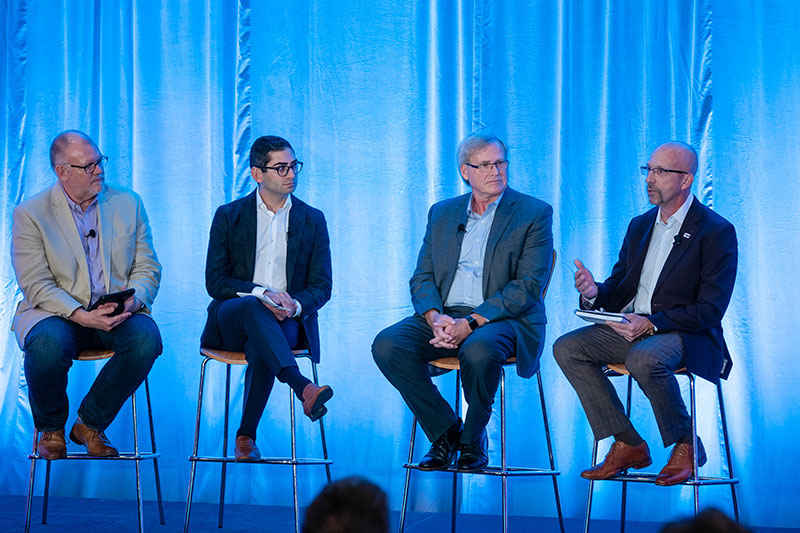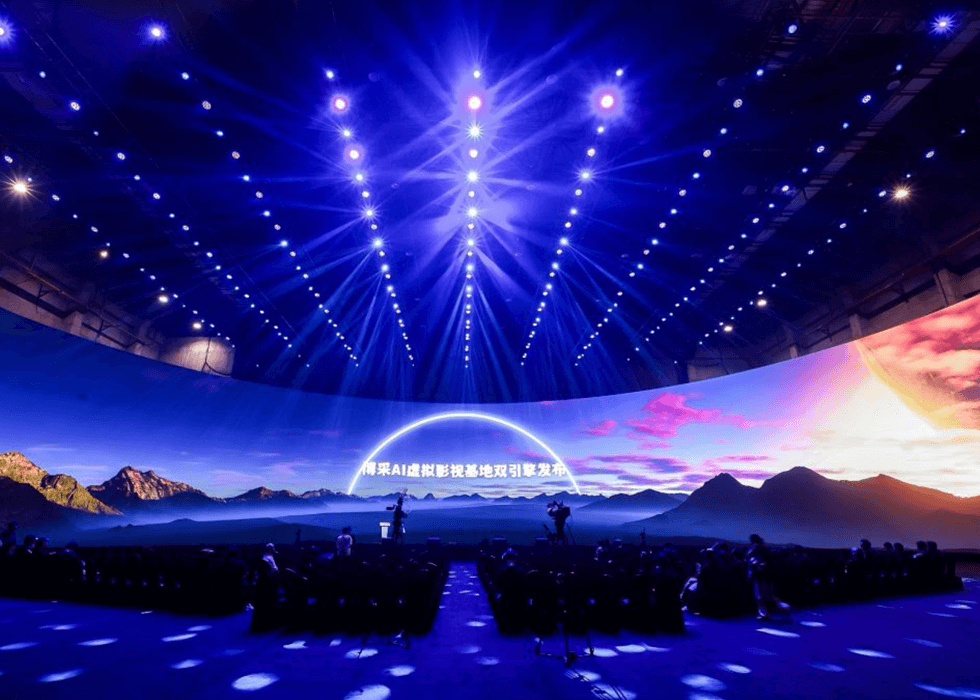Insight From AVEC 2019
How Live Events Companies Become ‘Technical Translators’
Corporate AV remains the largest segment of the pro-AV industry, according to AVIXA’s 2019 Industry Outlook and Trends Analysis (IOTA) report. But what if every corporation already had all the conference room, board room, and huddle space AV they needed (they don’t, but stick with it for a second)? What might be the next killer corporate AV application? Could it be the corporate event? Sure, companies have been hosting meetings since the dawn of corporate time — in those conference rooms, in hotel ballrooms, etc. — but not the same way, say, Apple hosts a corporate event, or Google, or Salesforce.
“Corporate events are a large and growing portion of the live events space, thanks to a continuing need for companies to educate, promote, and celebrate their brands, products, and services,” said Sean Wargo, Senior Director of Market Intelligence at AVIXA™. “The experience economy has raised the bar for producers of these events, requiring the latest in technology to attract and engage audiences.”
At AVIXA’s recent AV Executive Conference (AVEC) in New Orleans, the summit’s inaugural program dedicated to live events executives homed in on changes in that segment of the AV industry.
“We’re seeing a lot of our clients moving into new facilities and they’re building out performance meeting spaces where it’s a fully equipped AV experience, but it’s built for the audience experience,” said Don Guzauckas, Vice President of HB Live. “It’s a very robust, warm and friendly place, and the AV is just integrated and disappears into the background.”
Whether it’s corporate events — fixed or temporary — performances, public engagements, or any other AV-driven spectacle, thought leaders at AVEC agreed that the needs of event customers have evolved significantly, and therefore companies that support live events must change, too. In describing this new generation of corporate event customers, Guzauckas told AVEC attendees that some are “no longer renting; they’re no longer taking us offsite; and they’re calling just for our most experienced crews.”
But live events clients certainly have big ideas for technology, and how they engage AV firms is likely to change.
 (L-R) Donald Guzauckas Jr., HB Live; Steve Halling, AVFX; Gary Solomon Jr., Solomon Group; and Tom Stimson, The Stimson group speak on a panel at the Live Events portion of the 2019 AV Executive Conference.
(L-R) Donald Guzauckas Jr., HB Live; Steve Halling, AVFX; Gary Solomon Jr., Solomon Group; and Tom Stimson, The Stimson group speak on a panel at the Live Events portion of the 2019 AV Executive Conference.
Breaking a Cycle of Commoditized Events
For its part, AVIXA has moved away from attempting to address the challenges and opportunities of the live events industry as one large pool of AV business. In 2019, for the first time, with feedback from industry executives, the association’s market intelligence team has trained its analysis on two major segments: live events (including corporate events) and performances/entertainment. Taken together, they represent nearly $50 billion in revenue worldwide, growing annually at 4.7 percent and 8.9 percent, respectively. The result of a more detailed look at live events has been a pair of AVIXA Market Opportunity Analysis Reports (MOAR) examining corporate events and live performances from the point of view of audiences, event producers, and the AV companies that have long offered live event technology and services.
The MOAR: Corporate Events study, for example, indicates event producers and meeting planners plan to spend more on AV technology — and to increasingly buy and own more AV themselves — and that they’re showing increased interest in new and better AV solutions to support their events. They’re looking to live events companies to deliver experiences, which should have those live events companies thinking differently.
“The AV industry is already commoditized. Any time you’re providing line-item pricing — anytime you’re providing a quote or responding to an RFP — you’re buying into this,” said Anthony Vade, Experience Architect for FMAV.
Vade told AVEC attendees that the push by meeting planners to compare apple to apples when it comes to AV solutions and services “is the fastest way to mediocrity.” And that many are tempted to compare an apple to a fully baked apple pie (a complete, designed, experiential solution), but want the pie for the cost of the apple. “There’s an air of desperation in this commoditized market,” Vade said. “We’re running to appease them, and I think we need to break that cycle.”
The fact of the matter is, perhaps more than any other segment of pro AV, live events is on the front lines of the overall industry’s success in redefining customer expectations. Integrated AV experiences are all around us: We’re all “audiences” of digital signage, entertainment, video communication, and more. Naturally, there is a drive to bring this type of experience to actual audiences at live events.
Gary Solomon, Co-Founder and President of the Solomon Group, works in live events, attractions, museums, and more. He told the AVEC audience, “The advances that have been made in immersive environments and exhibits, our live events clients want more of that kind of experience, where their attendees are truly part of the journey.”
The challenge, Solomon said, comes in delivering what clients see and therefore want. “An Instagram-able moment is no longer enough,” he said. “What we struggle to do as an industry is provide those experiences we see in the immersive environments of exhibits, theme parks, and beyond, on the temporary basis of live events — and to be affordable.”
At FMAV, Vade says the company has taken an approach of engaging clients more in the event design — and charging them to be part of the process. “They need to engage us in a different way as part of a design team that co-creates and shares the measures of success,” he said. “We charge them for the experience of the co-creation. We don’t give it away.”
Which may mean that the live events salespeople engaging clients need to evolve. Tom Stimson, President of The Stimson Group, which advises live events firms, observed during AVEC, “Something needs to change, and I suspect it’s how we approach customers.”
From RFPs to Consultative Event Design
As it is throughout pro AV today, the live event sale isn’t so technical anymore, executives said during AVEC. Despite the ongoing preponderance of RFPs, quotes, and equipment lists (“shopping lists”), perpetuated so that clients can compare apples to apples, the lists aren’t really what clients are after, and AV companies can help them cut through the technical stuff.
“Can we create the transformational experience for those customers?” Vade said. “Can we empower them to learn how to communicate with us better? Can we empower them to work out how we engage with them and co-create so that they become stronger? Can we charge them for the experience of learning to be better planners as it relates to the audiovisual? And through that, can we create our own efficiencies?”
“We have to become the technical translators for clients who have a vision,” said Solomon. “We’re supposed to help augment that [vision] and at the same time reconcile that the theatrical tools that we’ve had in the past are no longer quite enough.”
Clients still seek very technically accomplished crews to run their events. Even as the technology becomes more complex, the expectation still is that the event goes flawlessly. But the AV professionals who will help clients realize their vision don’t have to be technologically savvy.
“Your future salesforces member is going to look much more like your client and less like us ,” Stimson told the gathering of AV executives.
Steve Halling, President and CEO of AVFX, told AVEC attendees his company had recently hired its first, true, dedicated salesperson. Previously, the company’s technical producers had been its client-facing salesforce. “And they were having a harder time — because they have that technical background — with some of the conversations the clients wanted to engage them in,” Halling said.
For the new hire, Halling chose someone with no AV industry experience. “I wanted that person to go to our events, see what we do, then go back to our customers and prospects and talk about the same awe and wonder that we want our customers to talk about.”
And it’s working, Halling said. Similarly, Vade’s efforts at FMAV to engage clients in design consultation — and to bill them for the service — is gaining traction. In the apple-to-apple pie analogy, Vade likens the ideal client-AV provider relationship to one of co-creation — of baking the pie together in the kitchen.
At the end of the day, relating AV to the experience that live events clients want to create will be an important factor in overcoming commoditization and creating a more successful future. “We don’t need another person to talk tech,” Halling said. “We need someone to talk human talk that people can relate to.”





